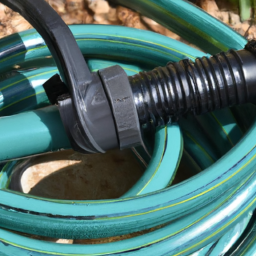Hooking Garden Hose To PVC What You Need
Table of Contents []
What Is Needed To Hook A Garden Hose Up To Pvc Pipe
Introduction
Garden hoses are often essential for tending to landscaping and lawn care needs around your home. Hooking up a garden hose to a PVC pipe is a great way to keep them secure and organized while preventing them from getting tangled or damaged. In this article, we'll explore all the steps and materials needed to set up a garden hose with a PVC pipe. From measuring and cutting the pipes to securing and tightening the connections, we'll break down all the information to get your garden hose connected safely and securely.
Popular 8-12 Topics
Topic 1: Preparation
Before hooking up the garden hose to the PVC pipe, there are a few preparations that need to be done. First, determine where you would like the hose to be located. Measure the garden hose and the pipe to make sure they are long enough to reach from the spigot to your desired location. Once you know the required length, cut the pipe as needed with a hacksaw or other cutting tool.
Topic 2: Materials
Gather all the necessary materials before you begin the process of hooking up the hose to the PVC pipe. Materials you'll need include PVC pipe, mounting clips, a garden hose, pipe glue, thread sealant tape, and a PVC primer.
Topic 3: Assembling
Now that you have all the necessary materials, it's time to start assembling. Start by connecting the male and female parts of the garden hose at the spigot. Make sure the thread sealant tape is wrapped around the fittings in order to prevent leaks. Then, apply the PVC glue to the end of the pipe that will be connected to the hose and attach it.
Topic 4: Securing
Now comes the process of securing the hose and pipe in place. Make sure the pipe and hose are in the position and that the connections are tight. Position the mounting clips around the pipe, so that they are evenly spaced. To make sure that the pipe is secure, tighten the clips with a screwdriver.
Topic 5: Testing
Once you've finished securing the pipe, it's time to test it. Open the spigot and check for any leaks. If the pipe and hose are secure, the water should flow freely. If there are any leaks, tighten the connection points and check again.
Topic 6: Maintenance
Now that the pipe and hose are connected, it's important to follow basic maintenance steps to ensure that the connection is secure for a long period of time. Check the mounting clips periodically to make sure that they are tight and secure, and make sure to drain any water from the hose when it is not in use.
Topic 7: Safety Considerations
Due to the potential hazards of water pressure and high temperatures, it's important to keep safety at the forefront when working with a garden hose and PVC pipe. Make sure that all connections are tight and secure, and that any pipes and hoses are in good condition. Additionally, make sure to wear safety glasses when cutting the pipe and gloves when handling sharp or hot objects.
Topic 8: Regulations
Before connecting the pipe and hose, it's important to be aware of any local regulations concerning water usage. Depending on the local regulations, you may need to obtain a permit to install the garden hose and PVC pipe.
Conclusion
Hooking up a garden hose to a PVC pipe is a great way to keep your hose secure and organized around your home. By following the steps outlined in this article, you can successfully connect a garden hose to a PVC pipe safely and securely. Make sure to follow the preparation steps and acquire the necessary materials before beginning the process, and be sure to follow safety recommendations and check local regulations before proceeding. In no time, you'll have a securely installed and properly functioning garden hose pipe!

Previous Page
Next Page
